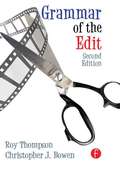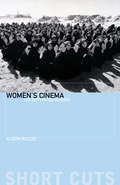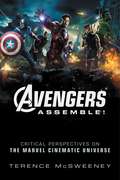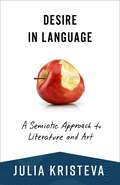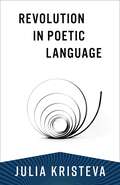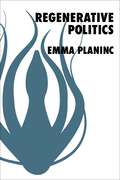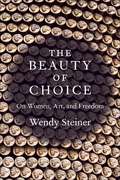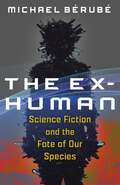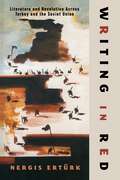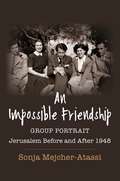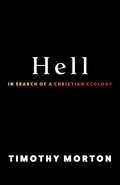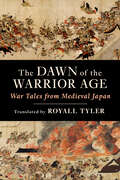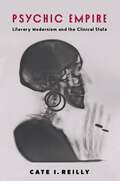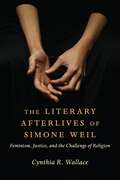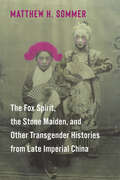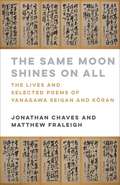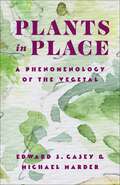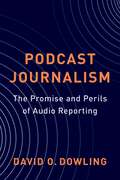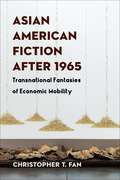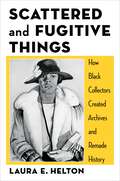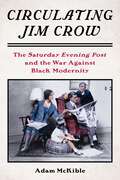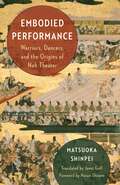- Table View
- List View
Grammar of the Edit (2nd edition)
by Roy Thompson Christopher J. BowenLearn the basic "grammar" of editing films and videos in Grammar of the Edit! This book shows you in no uncertain terms (independently of software) what you absolutely need to know to edit your video production. Whether you are just learning how to edit or you need a refresher, this book gives you a basic toolkit to understand the basic terms and the common practices of editing to help create a coherent and meaningful story or visual presentation. This book concentrates on where and how an edit is made and teaches you how to answer the simple question: 'What do I need to do in order to make a good edit between two shots?' Grammar of the Edit begins with an explanation of the basic rules of visual construction that will allow you to arrange your footage logically. The book takes you from the basic vocabulary of editing, to knowing when to cut (and why), to transitions, and finally to good working practices. Designed as an easy-to-use reference, each topic is covered succinctly and is accompanied by clear photographs and diagrams that illustrate the key concepts presented in the book. Simple, elegant, and easy to use, Grammar of the Edit is a staple of any filmmaker's library.
Women's Cinema: The Contested Screen (Short Cuts)
by Alison ButlerWomen's Cinema provides an introduction to critical debates around women's filmmaking and relates those debates to a variety of cinematic practices. Taking her cue from the groundbreaking theories of Claire Johnston, Alison Butler argues that women's cinema is a minor cinema that exists inside other cinemas, inflecting and contesting the codes and systems of the major cinematic traditions from within. Using canonical directors and less established names, ranging from Chantal Akerman to Moufida Tlatli, as examples, Butler argues that women's cinema is unified in spite of its diversity by the ways in which it reworks cinematic conventions.
Avengers Assemble!: Critical Perspectives on the Marvel Cinematic Universe
by Terence McSweeneyWe are living in the age of the superhero and we cannot deny it. <P><P>Avengers Assemble! is a vibrant and theoretically informed interrogation of one of the defining and most financially successful film franchises of the new millennium. In the first single-authored monograph on the topic of the Marvel cinematic universe, Terence McSweeney asks, "Why has the superhero genre reemerged so emphatically in recent years?" In an age where people have stopped going to the cinema as frequently as they used to, they returned to it in droves for the superhero film. What is it about these films that has resonated with audiences all around the globe? Are they just disposable pop culture artifacts or might they have something interesting to say about the fears and anxieties of the world we live in today? <P><P>Beginning with Iron Man in 2008, this study provocatively explores both the cinematic and the televisual branches of the series across ten dynamic and original chapters from a diverse range of critical perspectives which analyse their status as an embodiment of the changing industrial practices of the blockbuster film and their symbolic potency as affective cultural artifacts that are profoundly immersed in the turbulent political climate of their era.
Desire in Language: A Semiotic Approach to Literature and Art (European Perspectives: A Series in Social Thought and Cultural Criticism)
by Julia KristevaDesire in Language presents a selection of Julia Kristeva’s essays that trace the path of an investigation, extending over a period of ten years, into the semiotics of literature and the arts. Probing beyond the claims of Sigmund Freud, Jacques Lacan, and others, Kristeva proposes and tests theories centered on the nature and development of the novel, and on what she has defined as a signifying practice in poetic language and pictural works. Desire in Language fully shows what Roman Jakobson has called Kristeva’s “genuine gift of questioning generally adopted ‘axioms,’ and her contrary gift of releasing various ‘damned questions’ from their traditional question marks.”
Revolution in Poetic Language (European Perspectives: A Series in Social Thought and Cultural Criticism)
by Julia KristevaIn Revolution in Poetic Language, Julia Kristeva explicates her foundational distinction between the semiotic and the symbolic and explores their interrelationships. Linking the psychosomatic to the literary and the literary to a larger political horizon, she questions the premises of linguistic, psychoanalytic, philosophical, and literary theories.
Representation: The Birth of Historical Reality from the Death of the Past (Columbia Themes in Philosophy)
by Franklin Rudolf AnkersmitWhat makes historical writing distinctive? In Representation, Franklin Rudolf Ankersmit—the preeminent figure in the philosophy of history today—offers a deeply original way of understanding the practice of historical writing and a powerful vindication of history as an empirical discipline. Based on a new reading of the philosophy of G. W. Leibniz, Ankersmit constructs a rigorous framework for understanding the nature of historical argument.Representation argues that while previous states of affairs have left evidence that can be used to formulate true statements, the past itself is irretrievably lost. A condition of historical writing is that the past as such does not exist. Historical texts are best understood as complex signs that mutually criticize one another to compose a historical reality fundamentally distinct from common-sense notions of the past.Representation casts an entirely new light on fundamental concepts such as historical truth, historical debate, and historical rationality. Cogent, forceful, and provocative, this book is the most ambitious work in the philosophy of history in many years.
Regenerative Politics (New Directions in Critical Theory #98)
by Emma PlanincCritics of liberal democracy from both the left and right view rights not as protectors of freedom but as impediments to self-determination and call for radically regenerative political alternatives. Liberals respond to these challenges by reasserting that universal rights are self-evident, intentionally foreclosing the possibility of remaking the political order. Regenerative Politics makes a bold intervention into this fraught landscape, arguing that the survival of rights depends on abandoning their claims to self-evidence.Emma Planinc argues that liberal democracies must open themselves up to a regenerative politics that accepts all claims against political convention as self-determinative—including those that desire the rejection of rights or the overturning of liberal democracies themselves. Bringing together scholarship on race, democracy, liberalism, fascism, and the far right with an intellectual history of the Enlightenment and the French Revolution and a novel account of human nature, Regenerative Politics offers a new political theory for the revitalization of politics. Planinc shows that liberal democracies can arm themselves against extreme challenges by remaining perpetually open to the reconstitution of rights, restoring the capacity for human beings to determine themselves in the world.
The Beauty of Choice: On Women, Art, and Freedom
by Wendy SteinerIn The Beauty of Choice, the renowned cultural critic Wendy Steiner offers a dazzling new account of aesthetics grounded in female agency. Through a series of linked meditations on canonical and contemporary literature and art, she casts women’s taste as the engine of liberal values.Steiner reframes long-standing questions surrounding desire, art, sexual assault, and beauty in light of #MeToo. Beginning with an opera she wrote based on Chaucer’s “The Wife of Bath’s Tale,” she presents women’s sexual choices as fundamentally aesthetic in nature—expressions of their taste—and artworks as stagings of choice in courtship, coquetry, consent, marriage, and liberation. A merger of art criticism, evolutionary theory, political history, and aesthetics, this book paints the struggle between female autonomy and patriarchal violence and extremism as the essence of art.The Beauty of Choice pursues its claims through a striking diversity of examples: Sei Shōnagon’s defense of pleasure in the Pillow Book; Picasso’s and Balthus’s sexualization of their models; the redefinition of “waste” in postmodern fiction; and interactivity and empathy in the works of contemporary artists such as Marlene Dumas, Barbara MacCallum, Kristin Beeler, and Hannah Gadsby. It offers the first critical study of Heroines, a memorial to the twenty thousand women raped in Kosovo during the Serbian genocide. This deeply original book gives taste, beauty, and pleasure central roles in a passionate defense of women’s freedom.
Lyrical Individualism: Selected Writings on Henri Bergson and Anarchism (Columbia Themes in Philosophy, Social Criticism, and the Arts)
by Andre ColomerIn the early twentieth century, André Colomer was perhaps the best-known figure in the anarchist movement. A poet, philosopher, activist, and public speaker, he was enmeshed in the Parisian political and artistic scene at a time of political and cultural revolution. Amid the avant-garde explosions of Cubism, futurism, and surrealism and the ferment of radical politics on left and right, Colomer became anarchism’s leading advocate. He galvanized the Parisian public through his agitational writing and organizing, as well as his involvement in a sensational murder case, while developing a distinctive philosophical account of anarchist individualism. Yet Colomer died in obscurity in Moscow, abandoned by his friends and comrades, and is scarcely known in the English-speaking world today.Lyrical Individualism presents a selection of Colomer’s crucial writings, with a focus on anarchist theory and the philosophy of Henri Bergson. It reveals the richness of Colomer’s philosophical work, particularly his creative engagement with Bergson, Max Stirner, and Friedrich Nietzsche to forge a novel anarchist ideology. Colomer’s writings not only offer valuable insights into interwar anarchism, they also present a distinctive philosophical vision that in many ways anticipates theories and debates animating radical political movements today. This book also showcases his acerbic and pugnacious political commentary on the turbulent events of the 1910s and 1920s. The first translation and publication of Colomer’s work since his untimely death in 1931, Lyrical Individualism allows a range of readers to discover this vital thinker.
The Ex-Human: Science Fiction and the Fate of Our Species
by Michael BérubéFacing threats like climate change and nuclear warfare, science fiction authors have conjured apocalyptic scenarios of human extinction. Can such gloomy fates help us make sense of our contemporary crises? How important is the survival of our species if we wind up battling for an Earth that has become an unhabitable hellscape? What other possible futures do narratives of the end of humanity allow us to imagine?Michael Bérubé explores the surprising insights of classic and contemporary works of SF that depict civilizational collapse and contemplate the fate of Homo sapiens. In a lively, conversational style, he considers novels by writers including Ursula K. Le Guin, Margaret Atwood, Liu Cixin, Philip K. Dick, and Octavia Butler, as well as films that feature hostile artificial intelligence, such as 2001: A Space Odyssey, Blade Runner, and the Terminator and Matrix franchises. Bérubé argues that these works portray a future in which we have become able to see ourselves from the vantage point of something other than the human. Though framed by the possibility of human extinction, they are driven by a vision of the “ex-human”—a desire to imagine that another species is possible. For all science fiction readers worried about the fate of humanity, The Ex-Human is an entertaining yet sobering account of how key novels and films envision the world without us.
Writing in Red: Literature and Revolution Across Turkey and the Soviet Union (Modernist Latitudes)
by Nergis ErtürkThe republic of Turkey and the Soviet Union both emerged from the wreckage of empires surrounding World War I, and pathways of literary exchange soon opened between the two revolutionary states. Even as the Turkish government pursued a friendly relationship with the USSR, it began to persecute communist writers. Whether going through official channels or fleeing repression, many Turkish writers traveled to the Soviet Union during the 1920s and 1930s, publishing original work, editing prominent literary journals, and translating both Russian classics and Soviet literature into Turkish.Writing in Red traces the literary and exilic itineraries of Turkish communist and former communist writers, examining revolutionary aesthetics and politics across Turkey and the Soviet Union from the mid-1920s through the 1960s. Nergis Ertürk considers a wide range of texts—spanning genres such as erotic comedy, historical fiction and film, and socialist realist novels and theater—by writers including Nâzim Hikmet, Vâlâ Nureddin, Nizamettin Nazif, Suat Derviş, and Abidin Dino. She argues that these works belong simultaneously to modern Turkish literature, a transnational Soviet republic of letters, and the global literary archive of world revolution, alongside those of other writers who made the “magic pilgrimage” to Moscow. Exploring how Turkish communist writers on the run produced a remarkable transnational literature of dissent, Writing in Red offers a new account of global revolutionary literary culture.
An Impossible Friendship: Group Portrait, Jerusalem Before and After 1948 (Religion, Culture, and Public Life #47)
by Sonja Mejcher-AtassiIn Jerusalem, as World War II was coming to an end, an extraordinary circle of friends began to meet at the bar of the King David Hotel. This group of aspiring artists, writers, and intellectuals—among them Wolfgang Hildesheimer, Jabra Ibrahim Jabra, Sally Kassab, Walid Khalidi, and Rasha Salam, some of whom would go on to become acclaimed authors, scholars, and critics—came together across religious lines in a fleeting moment of possibility within a troubled history. What brought these Muslim, Jewish, and Christian friends together, and what became of them in the aftermath of 1948, the year of the creation of the State of Israel and the Palestinian Nakba?Sonja Mejcher-Atassi tells the story of this unlikely friendship and in so doing offers an intimate cultural and social history of Palestine in the critical postwar period. She vividly reconstructs the vanished social world of these protagonists, tracing the connections between the specificity of individual lives and the larger contexts in which they are embedded. In exploring this ecumenical friendship and its artistic, literary, and intellectual legacies, Mejcher-Atassi demonstrates how social biography can provide a picture of the past that is at once more inclusive and more personal. This group portrait, she argues, allows us to glimpse alternative possibilities that exist within and alongside the fraught history of Israel/Palestine. Bringing a remarkable era to life through archival research and nuanced interdisciplinary scholarship, An Impossible Friendship unearths prospects for historical reconciliation, solidarity, and justice.
Hell: In Search of a Christian Ecology
by Timothy MortonHell on earth is real. The toxic fusion of big oil, Evangelical Christianity, and white supremacy has ignited a worldwide inferno, more phantasmagoric than anything William Blake could dream up and more cataclysmic than we can fathom. Escaping global warming hell, this revelatory book shows, requires a radical, mystical marriage of Christianity and biology that awakens a future beyond white male savagery.Timothy Morton argues that there is an unexpected yet profound relationship between religion and ecology that can guide a planet-scale response to the climate crisis. Spiritual and mystical feelings have a deep resonance with ecological thinking, and together they provide the resources environmentalism desperately needs in this time of climate emergency. Morton finds solutions in a radical revaluation of Christianity, furnishing ecological politics with a language of mercy and forgiveness that draws from Christian traditions without bringing along their baggage. They call for a global environmental movement that fuses ecology and mysticism and puts race and gender front and center. This nonviolent resistance can stage an all-out assault on the ultimate Satanic mill: the concept of master and slave, manifesting today in white supremacy, patriarchy, and environmental destruction. Passionate, erudite, and playful, Hell takes readers on a full-color journey into the contemporary underworld—and offers a surprising vision of salvation.
The Dawn of the Warrior Age: War Tales from Medieval Japan
by Royall TylerThe war between the Heike and Genji clans in the twelfth and thirteenth centuries is among the most compelling and significant moments in Japan’s history, immortalized in The Tale of the Heike. Beyond the events recorded in this canonical text, the conflicts of the surrounding years are crucial to medieval Japanese culture and history. In 1156, power began to slip away from the court nobility in Kyoto. A shogunate was later founded in Kamakura, and in 1221, it won a decisive victory over the court.The three war tales translated in this book tell the story of these critical decades, vividly recording stages in the passage from rule by the imperial court in Kyoto to rule by the warrior government in Kamakura. “The Tale of the Hōgen Years” recounts a deposed emperor’s disastrous attempt to regain the throne in 1156. “The Tale of the Heiji Years” narrates a bloody clash between rival courtier factions in 1159. “An Account of the Jōkyū Years” records Kamakura’s victory over the imperial attempt to overthrow it in 1221. These works do not simply complete the story of The Tale of the Heike—they are classics of Japanese literature in their own right. Royall Tyler’s lively translation masterfully conveys the nature of medieval Japanese warfare, rendering aristocratic power politics and the brutal realities of violence with equal aplomb. The Dawn of the Warrior Age is an essential book for readers interested in premodern Japanese history and literature.
Psychic Empire: Literary Modernism and the Clinical State (Modernist Latitudes)
by Cate I. ReillyIn nineteenth-century imperial Germany and the Austro-Hungarian Empire, new scientific fields like psychophysics, empirical psychology, clinical psychiatry, and neuroanatomy transformed the understanding of mental life in ways long seen as influencing modernism. Turning to the history of psychiatric classification for mental illnesses, Cate I. Reilly argues that modernist texts can be understood as critically responding to objective scientific models of the psyche, not simply illustrating their findings. Modernist works written in industrializing Central and Eastern Europe historicize the representation of consciousness as a quantifiable phenomenon within techno-scientific modernity.Looking beyond modernism’s well-studied relationship to psychoanalysis, this book tells the story of the non-Freudian vocabulary for mental illnesses that forms the precursor to today’s Diagnostic and Statistical Manual of Mental Disorders. Developed by the German psychiatrist Emil Kraepelin in the 1890s, this psychiatric taxonomy grew from the claim that invisible mental illnesses were analogous to physical phenomena in the natural world. Reilly explores how figures such as Georg Büchner, Ernst Toller, Daniel Paul Schreber, Nikolai Evreinov, Vsevolod Ivanov, and Santiago Ramón y Cajal understood the legal and political consequences of representing mental life in physical terms. Working across literary studies, the history of science, psychoanalytic criticism, critical theory, and political philosophy, Psychic Empire is an original account of modernism that shows the link between nineteenth-century scientific research on the mental health of national populations and twenty-first-century globalized, neuroscientific accounts of psychopathology and sanity.
The Literary Afterlives of Simone Weil: Feminism, Justice, and the Challenge of Religion (Gender, Theory, and Religion)
by Cynthia R. WallaceThe French philosopher-mystic-activist Simone Weil (1909–1943) has drawn both passionate admiration and scornful dismissal since her early death and the posthumous publication of her writings. She has also provoked an extraordinary range of literary writing focused on not only her ideas but also her person: novels, nonfiction, and especially poetry. Given the challenges of Weil’s ethic of self-emptying attention, what accounts for her appeal, especially among women writers?This book tells the story of some of Weil’s most dedicated—and at points surprising—literary conversation partners, exploring why writers with varied political and religious commitments have found her thought and life so resonant. Cynthia R. Wallace considers authors who have devoted decades of attention to Weil, such as Adrienne Rich, Annie Dillard, and Mary Gordon, and who have written poetic sequences or book-length verse biographies of Weil, including Maggie Helwig, Stephanie Strickland, Kate Daniels, Sarah Klassen, Anne Carson, and Lorri Neilsen Glenn. She illuminates how writing to, of, and in the tradition of Weil has helped these writers grapple with the linked harms and possibilities of religious belief, self-giving attention, and the kind of moral seriousness required by the ethical and political crises of late modernity. The first book to trace Weil’s influence on Anglophone literature, The Literary Afterlives of Simone Weil provides new ways to understand Weil’s legacy and why her provocative wisdom continues to challenge and inspire writers and readers.
The Fox Spirit, the Stone Maiden, and Other Transgender Histories from Late Imperial China
by Matthew H. SommerIn imperial China, people moved away from the gender they were assigned at birth in different ways and for many reasons. Eunuchs, boy actresses, and clergy left behind normative gender roles defined by family and procreation. “Stone maidens”—women deemed physically incapable of vaginal intercourse—might depart from families or marriages to become Buddhist or Daoist nuns. Anatomical males who presented as women sometimes took a conventionally female occupation such as midwife, faith healer, or even medium to a fox spirit. Yet they were often punished harshly for the crime of “masquerading in women’s attire,” suspected of sexual predation, even when they had lived peacefully in their communities for many years.Exploring these histories and many more, this book is a groundbreaking study of transgender lives and practices in late imperial China. Through close readings of court cases, as well as Ming and Qing fiction and nineteenth-century newspaper accounts, Matthew H. Sommer examines the social, legal, and cultural histories of gender crossing. He considers a range of transgender experiences, illuminating how certain forms of gender transgression were sanctioned in particular social contexts and penalized in others. Sommer scrutinizes the ways Qing legal authorities and literati writers represented and understood gender-nonconforming people and practices, contrasting official ideology with popular mentalities. An unprecedented account of China’s transgender histories, this book also sheds new light on a range of themes in Ming and Qing law, religion, medicine, literature, and culture.
The Same Moon Shines on All: The Lives and Selected Poems of Yanagawa Seigan and Kōran
by Yanagawa SeiganYanagawa Seigan (1789–1858) and his wife Kōran (1804–79) were two of the great poets of nineteenth-century Japan. They practiced the art of traditional Sinitic poetry—works written in literary Sinitic, or classical Chinese, a language of enduring importance far beyond China’s borders. Together, they led itinerant lives, traveling around Japan teaching poetry and selling calligraphy. Seigan established Edo-period Japan’s largest poetry society and attained nationwide renown as a literary figure, as well as taking part in stealthy political activities in the years before the Meiji Restoration. Kōran was one of the most accomplished female composers of Sinitic poetry in Japanese history. After her husband’s death, she was arrested and imprisoned for six months as part of a crackdown on political reform. Seigan and Kōran’s works at once display mastery of a poetic tradition and depict Japan on the brink of monumental change.The Same Moon Shines on All explores the world of Seigan and Kōran, pairing an in-depth account of their lives and times with an inviting selection of their poetry. The book features eminent Sinologist Jonathan Chaves’s translations of more than 130 poems by Seigan and more than 50 by Kōran, each annotated and followed by the original Chinese text. An introduction by Matthew Fraleigh, a specialist in Japan’s Sinitic literature, offers insight into the historical and literary context as well as the poems themselves. Approachable and delightful, this book makes the riches of Japanese Sinitic poetry available to a range of readers.
Plants in Place: A Phenomenology of the Vegetal (Critical Life Studies)
by Edward S. Casey Michael MarderPlants are commonly considered immobile, in contrast to humans and other animals. But vegetal existence involves many place-based forms of change: stems growing upward, roots spreading outward, fronds unfurling in response to sunlight, seeds traveling across wide distances, and other intricate relationships with the surrounding world. How do plants as sessile, growing, decaying, and metamorphosing beings shape the places they inhabit, and how are they shaped by them? How do human places interact with those of plants—in lived experience; in landscape painting; in cultivation and contemplation; in forests, fields, gardens, and cities?Examining these questions and many more, Plants in Place is a collaborative study of vegetal phenomenology at the intersection of Edward S. Casey’s phenomenology of place and Michael Marder’s plant-thinking. It focuses on both the microlevel of the dynamic constitution of plant edges or a child’s engagement with moss and the macrolevel of habitats that include the sociality of trees. This compelling portrait of plants and their places provides readers with new ways to appreciate the complexity and vitality of vegetal life. Eloquent, descriptively rich, and insightful, the book also shows how the worlds of plants can enhance our understanding and experience of place more broadly.
Podcast Journalism: The Promise and Perils of Audio Reporting
by David DowlingPodcasting’s stratospheric rise has inspired a new breed of audio reporting. Offering immersive storytelling for a binge-listening audience as well as reaching previously underserved communities, podcasts have become journalism’s most rapidly growing digital genre, buoying a beleaguered news industry. Yet many concerns have been raised about this new medium, such as the potential for disinformation, the influence of sponsors on content, the dominance of a few publishers and platforms, and at-times questionable adherence to journalistic principles.David O. Dowling critically examines how podcasting and its evolving conventions are transforming reporting—and even reshaping journalism’s core functions and identity. He considers podcast reporting’s most influential achievements as well as its most consequential ethical and journalistic shortcomings, emphasizing the reciprocal influences between podcasting and traditional and digital journalism. Podcasting, both as a medium and a business, has benefited from the blurring of boundaries separating news from entertainment, editorial from advertising, and neutrality from subjectivity. The same qualities and forces that have allowed podcasting to bypass the limitations of traditional categories, expand the space of social and political discourse, and provide openings for marginalized voices have also permitted corporations to extend their reach and far-right firebrands to increase their influence. Equally attentive to the medium’s strengths and flaws, this is a vital book for all readers interested in how podcasting has changed journalism.
Asian American Fiction After 1965: Transnational Fantasies of Economic Mobility
by Christopher T. FanAfter the 1965 Immigration and Nationality Act loosened discriminatory restrictions, people from Northeast Asian countries such as South Korea, Taiwan, Japan, and eventually China immigrated to the United States in large numbers. Highly skilled Asian immigrants flocked to professional-managerial occupations, especially in science, technology, engineering, and math. Asian American literature is now overwhelmingly defined by this generation’s children, who often struggled with parental and social expectations that they would pursue lucrative careers on their way to becoming writers.Christopher T. Fan offers a new way to understand Asian American fiction through the lens of the class and race formations that shaped its authors both in the United States and in Northeast Asia. In readings of writers including Ted Chiang, Chang-rae Lee, Ken Liu, Ling Ma, Ruth Ozeki, Kathy Wang, and Charles Yu, he examines how Asian American fiction maps the immigrant narrative of intergenerational conflict onto the “two cultures” conflict between the arts and sciences. Fan argues that the self-consciousness found in these writers’ works is a legacy of Japanese and American modernization projects that emphasized technical and scientific skills in service of rapid industrialization. He considers Asian American writers’ attraction to science fiction, the figure of the engineer and notions of the “postracial,” modernization theory and time travel, and what happens when the dream of a stable professional identity encounters the realities of deprofessionalization and proletarianization. Through a transnational and historical-materialist approach, this groundbreaking book illuminates what makes texts and authors “Asian American.”
Scattered and Fugitive Things: How Black Collectors Created Archives and Remade History (Black Lives in the Diaspora: Past / Present / Future)
by Laura HeltonDuring the first half of the twentieth century, a group of collectors and creators dedicated themselves to documenting the history of African American life. At a time when dominant institutions cast doubt on the value or even the idea of Black history, these bibliophiles, scrapbookers, and librarians created an enduring set of African diasporic archives. In building these institutions and amassing abundant archival material, they also reshaped Black public culture, animating inquiry into the nature and meaning of Black history.Scattered and Fugitive Things tells the stories of these Black collectors, traveling from the parlors of the urban north to HBCU reading rooms and branch libraries in the Jim Crow south. Laura E. Helton chronicles the work of six key figures: bibliophile Arturo Schomburg, scrapbook maker Alexander Gumby, librarians Virginia Lee and Vivian Harsh, curator Dorothy Porter, and historian L. D. Reddick. Drawing on overlooked sources such as book lists and card catalogs, she reveals the risks collectors took to create Black archives. This book also explores the social life of collecting, highlighting the communities that used these collections from the South Side of Chicago to Roanoke, Virginia. In each case, Helton argues, archiving was alive in the present, a site of intellectual experiment, creative abundance, and political possibility. Offering new ways to understand Black intellectual and literary history, Scattered and Fugitive Things reveals Black collecting as a radical critical tradition that reimagines past, present, and future.
Circulating Jim Crow: The Saturday Evening Post and the War Against Black Modernity (Modernist Latitudes)
by Adam McKibleIn the early twentieth century, the Saturday Evening Post was perhaps the most popular and influential magazine in the United States, establishing literary reputations and shaping American culture. In the popular imagination, it is best remembered for Norman Rockwell’s covers, which nostalgically depicted a wholesome and idyllic American way of life. But beneath those covers lurked a more troubling reality. Under the direction of its longtime editor, George Horace Lorimer, the magazine helped justify racism and white supremacy. It published works by white authors that made heavy use of paternalistic tropes and demeaning humor, portraying Jim Crow segregation and violence as simple common sense.Circulating Jim Crow demonstrates how the Post used stereotypical dialect fiction to promulgate white supremacist ideology and dismiss Black achievements, citizenship, and humanity. Adam McKible tells the story of Lorimer’s rise to prominence and examines the white authors who provided the editor and his readers with the caricatures they craved. He also explores how Black writers of the Harlem Renaissance pushed back against the Post and its commodified racism. McKible places the erstwhile household names who wrote for the magazine in conversation with figures such as Paul Laurence Dunbar, F. Scott Fitzgerald, Ann Petry, W. E. B. Du Bois, and William Faulkner. Revealing the role of the Saturday Evening Post in normalizing racism for millions of readers, this book also offers a new understanding of how Black writers challenged Jim Crow ideology.
Bhagavad Gītā Concordance: A Comprehensive Word Reference with English and Sanskrit Indexes
by Graham M. SchweigThe Bhagavad Gītā is one of the treasures of world culture. Sacred in India, and beloved to hundreds of millions throughout the centuries and around the world, it is the best-known of all Sanskrit works in the West. There has been sustained interest in the Bhagavad Gītā for several centuries in the Anglophone world, and well over one hundred complete English translations have been published.This book presents the first comprehensive and accessible concordance of the Bhagavad Gītā. The concordance lists every word of the original, noting all its locations and instances within the text, along with related words. It is accompanied by various supportive references, including Sanskrit and English indexes. The concordance can be linked with any translation, giving readers in-depth access to the Sanskrit text.This book is designed for those with little or no knowledge of Sanskrit as well as those familiar with the original text. It allows readers to gain a greater reach into the Bhagavad Gītā and achieve a deeper understanding of its ideas, facilitating nuanced analyses of the text and its language. It is an essential reference for scholars, teachers, students, and other readers interested in India’s spiritual classics.
Embodied Performance: Warriors, Dancers, and the Origins of Noh Theater
by 1 Shinpei MatsuokaIn this groundbreaking book, Matsuoka Shinpei—a leading scholar of noh theater—provides a detailed account of the birth of one of Japan’s most celebrated art forms. Although noh has often been associated with the elite, Embodied Performance explores its links to a wider popular culture, revealing a rich and colorful public space where courtiers and commoners mingled.Matsuoka traces noh’s connections to popular and religious dances, linked verse, and chigo (beautiful temple boy) culture, emphasizing performance and the body. He describes the world of noh playwright Zeami as well as his views on dramaturgy and performance—and argues that Zeami was once a chigo. Matsuoka shows how religious rituals and cultural forms like ecstatic dance prayer and plays about demons in hell attracted people on the margins. Such activities, Matsuoka contends, drew on the tension between wild acrobatic movement and corporeal restraint, influencing the development of noh as well as the art of flower arranging and the tea ceremony. Janet Goff’s translation makes available in English a classic work of Japanese scholarship that will be invaluable to those interested in medieval Japanese culture, noh, and theatrical practice.
